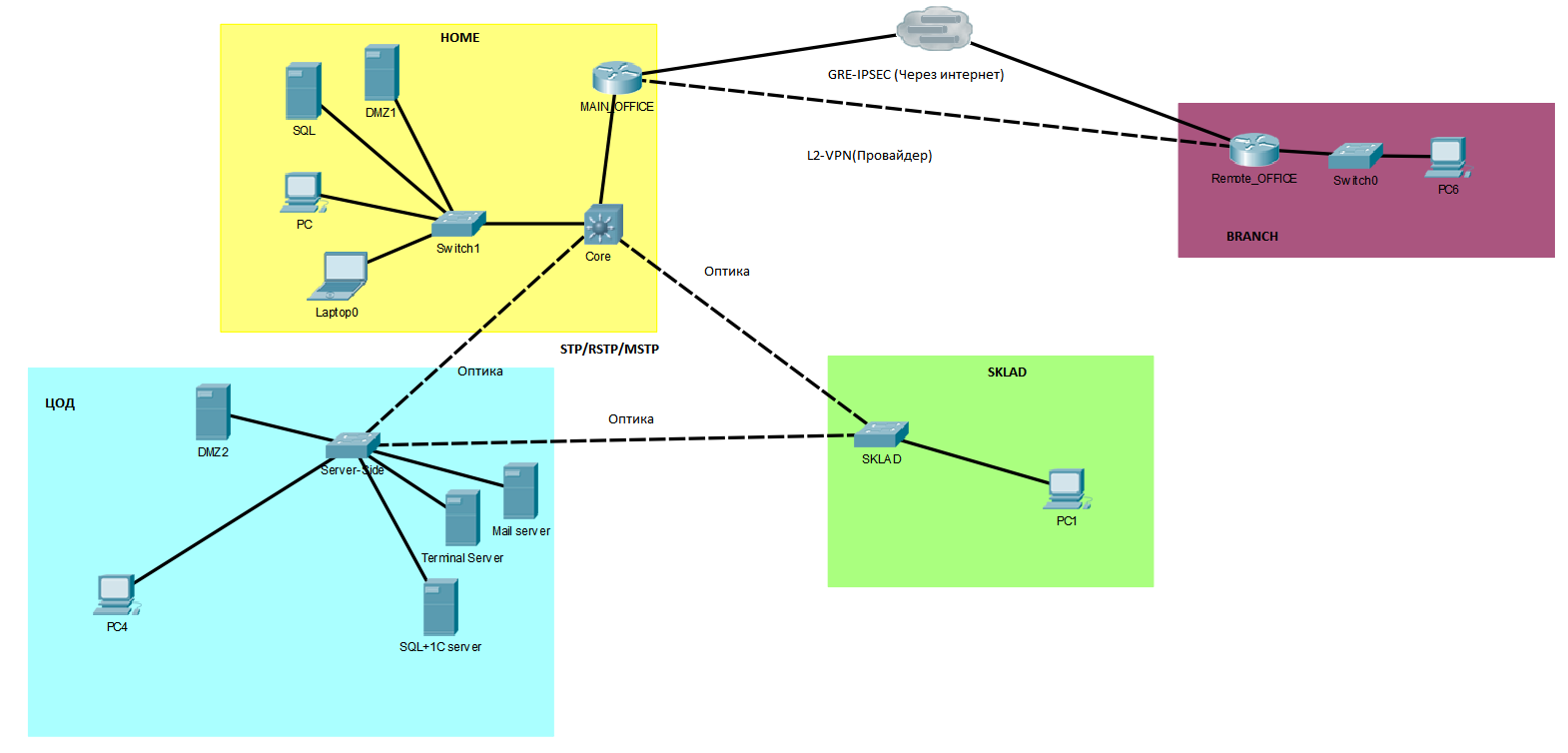Answer the question
In order to leave comments, you need to log in
Establish a ring in an OSPF vs *STP network. What to choose?
Hello.
We are modernizing the infrastructure. Now almost everything is in a single /22 network, the number of network devices is about 350. Also, quite a lot of broadcast traffic has been noticed in the network. about 20% of this needs to be eliminated. I want to do everything right so that it works stably, fault-tolerantly and with the best performance.
There are 4 objects.
1. Main office. It contains computers, phones, printers, a few servers, and also requires a small DMZ.
2. Data center. There are many servers in it, a more extensive DMZ is needed, there are a small number of PCs, phones, printers.
3. Warehouse. well, it's clear. printers, users, phones.
4. Remote office. Printers, phones, computers.
The first three objects are located in different buildings, but within walking distance from each other, optics are laid between them. Internet access is provided through one point in the main office.
The remote office connects to the main office using L2VPN from the provider (which is no no yes and falls), so we plan to reserve this channel via the Internet (GRE-IPSEC)
We want to make fault tolerance on the first three objects by connecting them into a ring. (Earlier, the data center and the warehouse were connected only through the office, and it happened that the optics were torn)
There are two options for how to organize the ring:
1.Install routers at three sites and set up dynamic routing, such as OSPF. Set up separate vlans on end objects. Those. users of the first object will have one vlan, another printers, third phones, etc. respectively, the same on other objects. Accordingly, the connection between objects will go along the shortest route and rebuild in case of problems with physics.
2. Install switches and configure spanning-tree. RSTP or maybe MSTP. Configure common vlans for all three objects. Those. all users will have their own vlan, all printers their own, all phones their own, DMZ their own, etc... With RSTP\MSTP, you can configure walking along the shortest route for each vlan.
We have equipment for the implementation of this task in the form of 4x Mikrotik 4011, 2x Mikrotik SCR226 several switches HP L2 and Cisco L2 level. Only micros are obtained from L3 switches, it is possible to take an L3 switch.
I ask for advice on which scheme will work better and more correctly, and why. And also in terms of setup and maintenance, which would be easier? Maybe there are some other better options?
What difficulties can we face in each of the cases?
Attached are the proposed network diagrams.
OSPF  *STP
*STP
Answer the question
In order to leave comments, you need to log in
Wherever possible, it is always better to make reservations at the L3 level. In this way, you will reduce the broadcast traffic and get rid of the risk of L2 loops. + Using routing traffic is easier to balance than at the L2 level. The less STP you have online, the better you sleep :)
If the switches have already been purchased, then yes, if still in the process, look towards l2 + or l3 switches instead of a bunch of l2 + microt switches. For the price, if you look in the direction of some kind of nagas or kuteks, it will not be very expensive, but there are fewer points of administration, monitoring and failure.
Didn't find what you were looking for?
Ask your questionAsk a Question
731 491 924 answers to any question